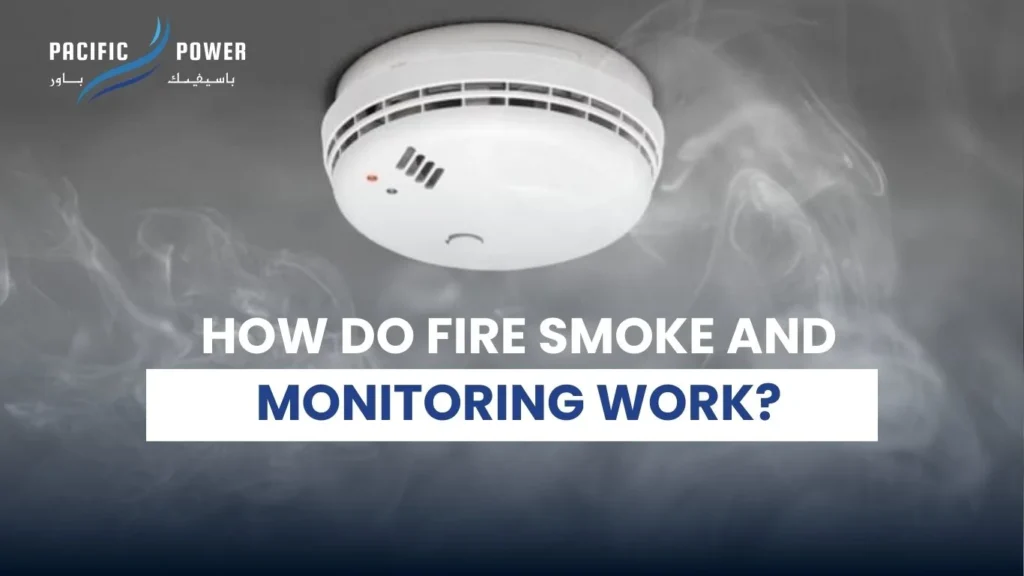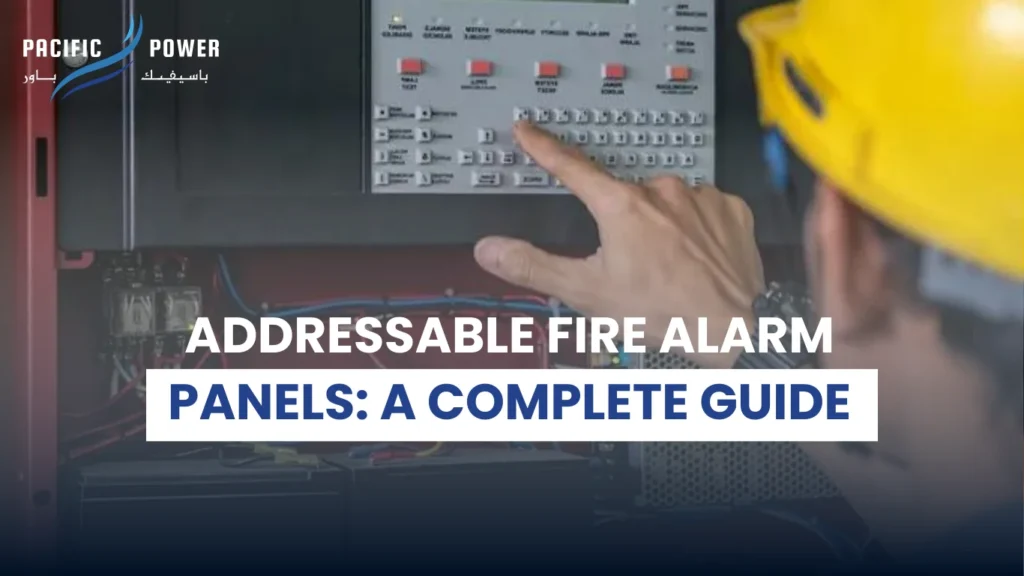
Table of Contents
What Kind of Smoke Alarm Should I Buy?
Smoke alarms are crucial for protecting your home and family from fire hazards. They alert you at the first sign of smoke, giving you valuable time to evacuate safely.
Smoke alarms differ from smoke detectors; detectors only detect smoke and require a separate alarm system, while smoke alarms both detect and alert you. With various types of smoke alarms available, knowing which one to buy can be confusing.
Pacific Power can guide you in choosing the right smoke alarm for your home, ensuring maximum safety and compliance with local regulations of Dubai, UAE.This article will shed light on the various types of smoke alarms and where they can be the most useful.
Different Types of Smoke Alarms
Smoke alarms are essential for home safety, with various types offering unique protection. Understanding the differences between ionization, photoelectric, combination, and other alarms helps in choosing the best option.
1.Ionization Smoke Alarms
Ionization smoke alarms work by using a small amount of radioactive material to ionize the air. When smoke enters the alarm, it disrupts the ionization process, triggering the alarm. These alarms are highly sensitive to fast-flaming fires, such as those caused by paper or grease.
They are best suited for kitchens and living rooms, where fast-flaming fires are more likely to occur. However, they are prone to false alarms from cooking or steam, so placement is important.
2.Photoelectric Smoke Alarms
Photoelectric smoke alarms use a beam of light inside the sensor chamber. When smoke particles interrupt the light beam, the alarm is activated. These alarms are particularly sensitive to slow, smoldering fires that produce a lot of smoke before flames develop.
They are ideal for areas like bedrooms or hallways, where a fire may start slowly and smolder for a while before turning into flames. Photoelectric alarms are less prone to false alarms compared to ionization models.
3.Combination Ionization-Photoelectric Alarms
Combination ionization-photoelectric alarms feature both ionization and photoelectric sensors, providing dual protection. They detect both fast-flaming fires and slow, smoldering fires, making them suitable for any room in the house.
This versatility ensures that all types of fires are detected early, maximizing safety. While these alarms offer superior coverage, they are usually more expensive than single-sensor models, but the increased protection is often worth the cost.
4.Intelligent Multi-Criteria Alarms
Intelligent multi-criteria alarms use advanced algorithms to analyze multiple factors, such as smoke, heat, and carbon monoxide levels, to determine if a real fire is occurring.
These alarms reduce the likelihood of false alarms while maintaining high sensitivity to dangerous conditions. They are best for homes where false alarms have been a frequent issue, as they can differentiate between smoke from cooking and actual fire threats.
5.Voice Smoke Alarms
Voice smoke alarms combine traditional beeping alerts with pre-recorded voice instructions that clearly communicate the danger and direct occupants on what to do.
Studies have shown that children respond more quickly to voice commands than to traditional alarm sounds, making these alarms especially useful for homes with young children or elderly individuals. The voice function adds an extra layer of clarity during an emergency.
6.Combination Smoke and Carbon Monoxide Alarm
A combination smoke and carbon monoxide alarm provides dual protection by detecting both smoke and dangerous carbon monoxide (CO) levels.
Carbon monoxide is a colorless, odorless gas that can be deadly, and this alarm ensures protection from both fire and CO poisoning. These alarms are best placed in areas where CO exposure is a risk, such as near fuel-burning appliances, garages, or bedrooms.
Interconnected Smoke Alarms and Why You Need Them?
Interconnected smoke alarms link multiple alarms throughout your home. When one alarm detects smoke, all alarms sound simultaneously, ensuring that everyone in the house is alerted to the danger.
This is especially important for larger homes or multi-story residences, where a fire might not be detected in one area quickly enough to alert all occupants. Interconnected alarms can be wired together or use wireless technology.
Different Batteries for Smoke Alarm Power Supply
Replaceable Batteries
Replaceable batteries are the traditional power source for smoke alarms. These alarms typically use 9-volt or AA batteries, which need to be replaced annually or when the low-battery warning chirps. They offer flexibility but require regular maintenance to ensure the alarm functions properly.
10-Year Battery Alarms
10-year battery alarms come with a built-in, non-replaceable battery that lasts for up to 10 years. These alarms eliminate the need for frequent battery replacements and are ideal for those who want a low-maintenance option. Once the battery is depleted, the entire unit must be replaced, but these alarms provide a long-term solution for consistent protection.
Hardwired with Battery Backup
Hardwired smoke alarms are connected directly to your home’s electrical system and come with a battery backup in case of a power outage. This setup ensures continuous protection, even during blackouts. These alarms are ideal for new constructions or major renovations, as they require professional installation. The battery backup typically uses a 9-volt battery, which should be replaced annually.
Which Battery is the Best in Terms of Usage?
When considering which power source is best, hardwired alarms with battery backup offer the most reliable protection.
Since they are connected to the home’s electrical system, they provide continuous operation, with the battery backup ensuring functionality during power outages.
While 10-year battery alarms offer convenience, hardwired models are ideal for long-term reliability, especially for large homes where uninterrupted protection is critical.
When to Replace Smoke Alarms?
Smoke alarms should be replaced every 10 years, as their sensors degrade over time, reducing effectiveness. If your alarm is malfunctioning, chirping despite a fresh battery, or damaged, it’s time for a replacement. Always check the manufacturer’s label for the specific replacement date, and perform regular tests to ensure your alarms are working properly to maintain optimal fire safety.
Conclusion
Choosing the right smoke alarm for your home is vital for ensuring your family’s safety. Understanding the different types of alarms, from ionization to intelligent multi-criteria models, will help you make an informed decision.
Consider factors like power supply, the size of your home, and your family’s specific needs. With Pacific Power’s guidance, you can select the best smoke alarm to suit your home and keep everyone safe from potential fire hazards. Investing in the right alarm now could save lives later.

